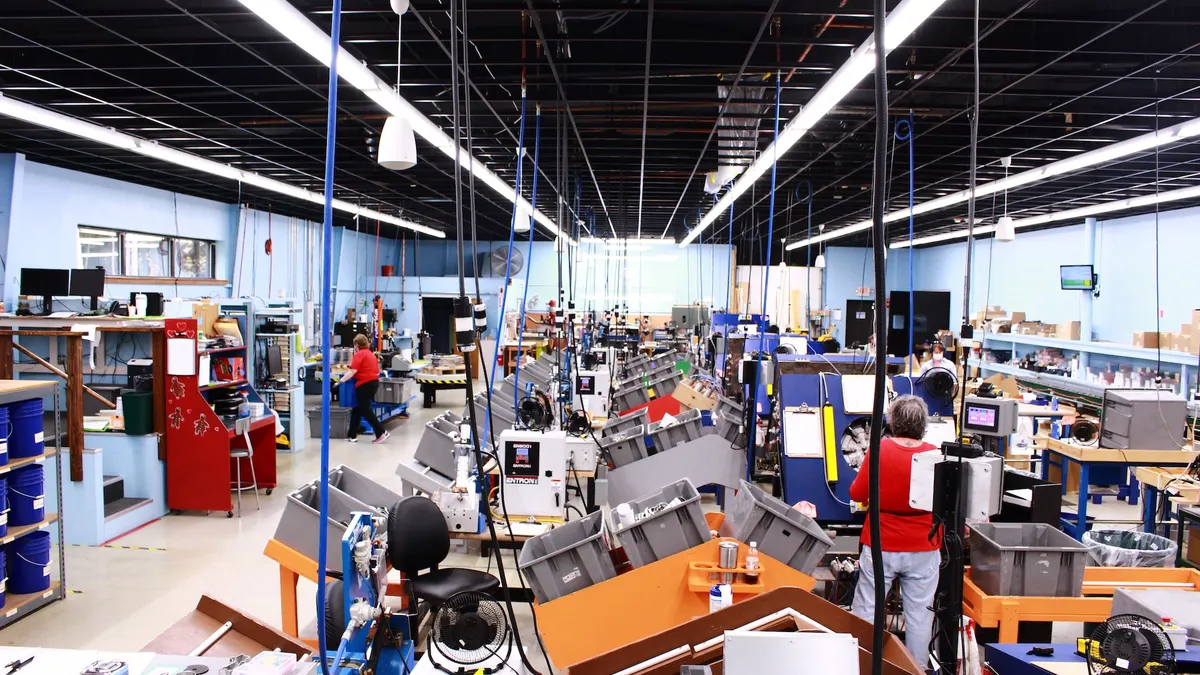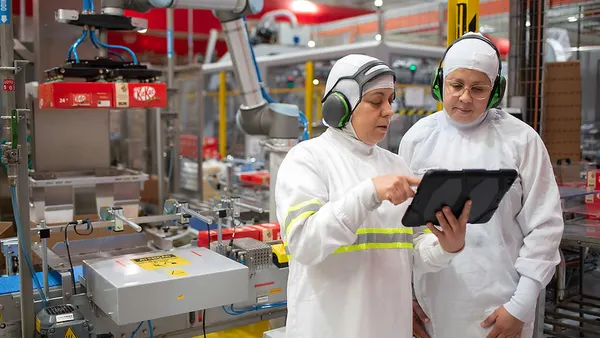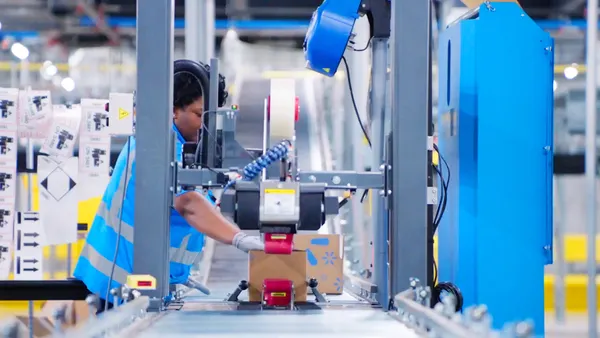Dive Brief:
- Supply chains are ripe for disruption, and over the past three years the 2017 MHI Annual Industry Report has surveyed over 1,000 supply chain professionals to rank and track the most disruptive innovations.
- Robotics and automation topped the list this year, followed closely by predictive analytics, driverless vehicles and drones. While robotics has typically been a top three disruptor, neither driverless vehicles, drones nor predictive analytics were seen as a top disruptor two or three years ago.
- However, respondents felt business adoption limited by cyber-security concerns, a dearth of talent and a lack of understanding of the technologies' benefits. Companies, however, are increasing talent recruitment efforts, partnering with stakeholders like vendors or academia, and trying pilot projects to better prepare for the future.
Dive Insight:
Disruption comes in all shapes and forms, and MHI's annual industry report provides a good way to track the emerging technologies that are being implemented alongside those that are hype. In this way, looking at the year-over-year changes in top disruptive technologies also points out the deep ways supply chains have changed.
For one, the fact robotics and automation remains at the top of the list is hardly surprising but also shows respondents — be it manufacturers, service providers or distributors — continue to see materials handling solutions as a powerful way to improve productivity. Inventory management is a pivotal piece of the supply chain puzzle, after all.
On that note, what is surprising is that sensors and inventory management tools fell from the top three disruptors this year, replaced by highly-hyped technologies: predictive analytics and driverless vehicles and drones.
A fall on the rankings does not mean the technologies are any less disruptive, but could signal a normalization of innovation where supply chains are expected to be using inventory optimization tools and sensors. Meanwhile, the company using predictive analytics may be considered an early adopter of a highly disruptive technology. In fact, respondents said they were 89% likely to use of predictive analytics in the supply chain within the next six years.
In other words: supply chains have evolved over the past three years, and are now looking to the next-big innovation for competitive advantage. To find it, it may be more useful to look at the growth in respondents identifying the technology as a disruptor, rather than overall rankings.
Here, we find the technologies most in need or best-hyped. 3-D printing tops the list, with 122% more respondents ranking it as disruptive this year than in 2015. Driverless vehicles and drones follows with 80% growth over the past three years, followed by cloud computing and storage (54%) and predictive analytics (50%).
However, to adopt any technology supply chain professionals must make clear the benefits of investing in technology. Leaders must share the ROI of digital supply chain technologies with the C-Suite, and should clarify the risks of obsolescence.













